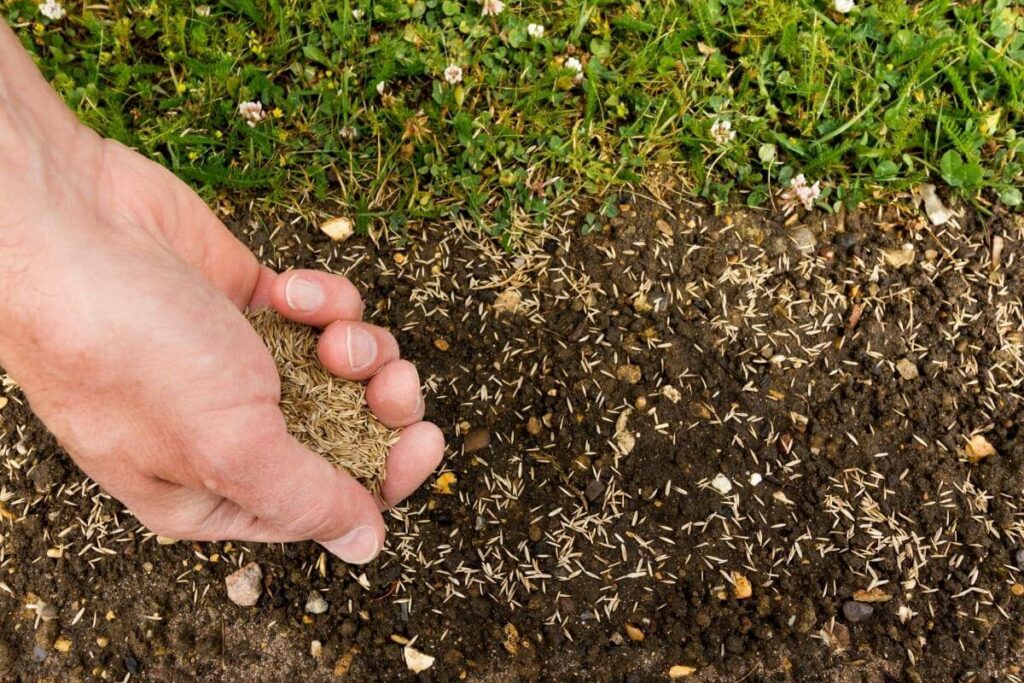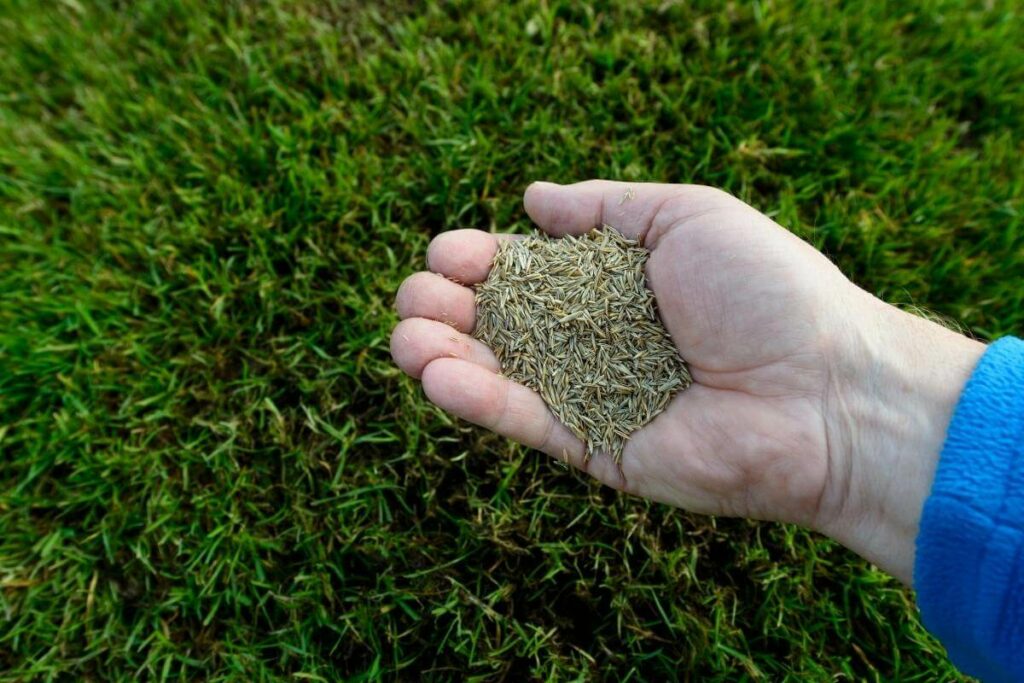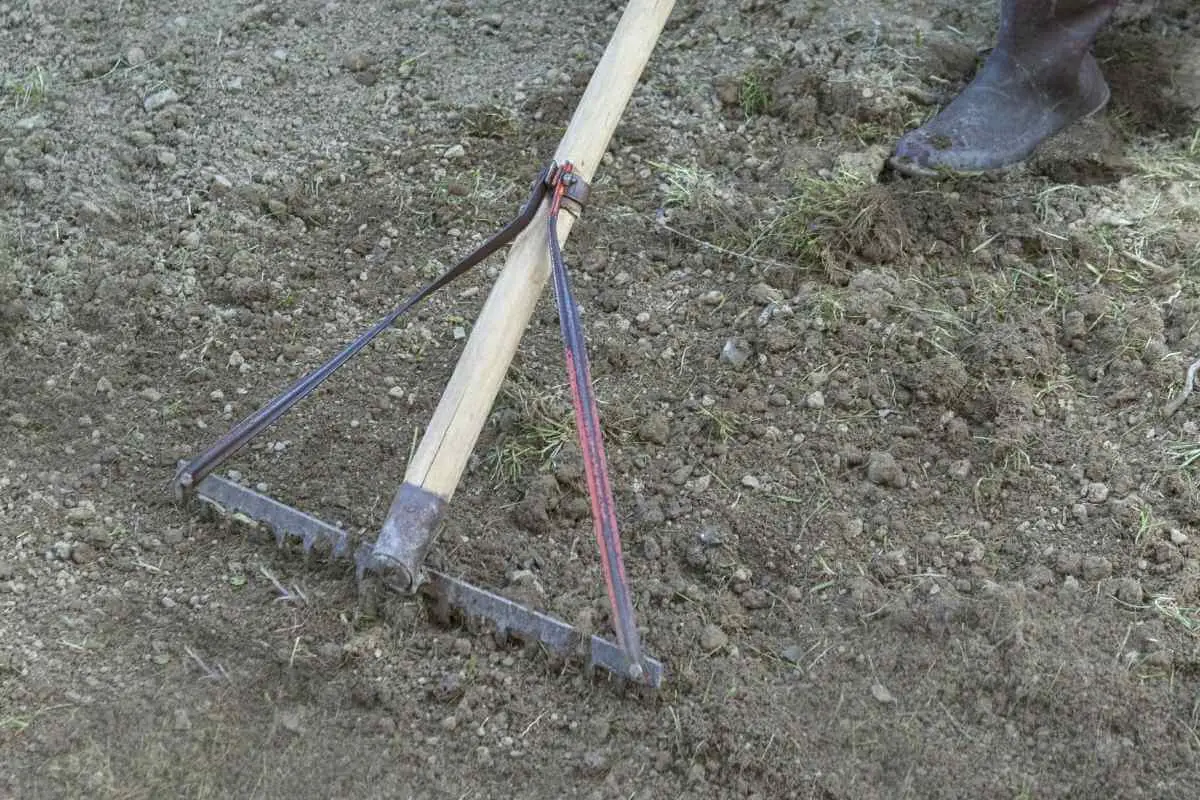In the spring, you realize that your lawn requires some attention, and you recall the plenty of stored grass seeds since last year.
So, this raises an important question: Are your grass seeds still alive or not?
When it comes to this question the best ways that you can tell if your grass seeds have died are by knowing your grass seeds shelf life, looking for discoloration, water levels, and how seeds are stored. This article will contain lots of information about the topic so, stick around as we dive into the subject!
How to Check If My Grass Seeds Are Okay?
Before you go out and buy new grass seeds for your lawn, check to see if your old ones are still viable.

You may be able to save yourself some money if the old seeds are still okay.
First off, check your grass seeds’ expiry date.
Then, you can check their viability through physical and water signs to determine if they are alive and well enough to grow.
And now, let’s have a deeper look at each of them.
Grass Seed Shelf Life
Grass seed, like most other natural items with a shelf life, has an expiry date.
As a general rule, use grass seed within two to three years of purchase. It’s recommended to get rid of any stored grass seed that has passed the expiration date.
Keep in mind that after the first two years of storage, the seed germination rate will decrease by about 10% to 20% per year.
This means that you’ll have to use more of the old seeds when sowing to achieve proper coverage since some seeds won’t germinate.
Key Takeaway: If you go ahead and plant the old seeds, you’ll waste a lot of time irrigating, feeding, and tending seeds that’ll not give 100% growth.
Physical Signs
You may tell if the seeds have expired merely by looking at them.
Some seeds will give you clear indications that they are unable to be planted.
For example, look for evidence of discoloration and fungal growth on the body of your seed. These are the first signs of rotten seeds.
Also, check if they’ve gotten soggy and are clinging together; this is another sign of damage.
Water Sign
Another way to make sure whether your seeds are viable or not is through conducting certain steps to see if they’ll germinate.
Here are the steps:
- Fill a cup halfway with water (at least one inch of water) and a paper napkin.
- Fill the cup halfway with your seeds. Ascertain that they land on the napkin.
- Cover the cup with plastic to create a greenhouse effect. A plastic bag will suffice for this.
- Always keep an eye on the napkin to make sure it’s moist.
- Allow the cup to sit in the sun for a while.
After you’ve completed this, wait 12-14 days to check if the seeds have germinated.
Factors Affecting Grass Seeds Viability
Storage conditions have a significant impact on the vitality of stored seeds.
Seeds will keep their viability the longest if stored in cool, dry conditions, which aren’t typical of most garages and sheds.
The following are some of the elements that influence seed viability:
- Seed moisture content
- Storage temperature
- Storage humidity
- Seed deterioration
How to Store Grass Seeds?
It’s important to store your extra grass seeds so that you can plant them the following season.
Plus, when filling in barren patches or getting rid of undesired grass around the lawn, these leftover seeds can be helpful.
They might also come in handy if your lawn gets damaged. So, you need to know how to store the grass seeds correctly.
Let’s walk you through it.
Dry the Grass Seeds Before Storing
Paper towels can be used to dry saved seeds.
When they’re dry, they’ll stick to the towels, so roll them up and store them that way.

When you’re ready to plant, tear off pieces of the towel, one seed at a time, and place the seed and the towel in the soil together.
Store the Grass Seeds in the Right Temperatures
A somewhat chilly temperature situation greatly enhances the efficacy of grass seeds.
The optimal temperature for storing seeds is between 50 and 60 degrees Fahrenheit.
If your seeds get exposed to temperatures above 100 degrees Fahrenheit for more than a month or two, they’ll perish.
Keep the Seeds Dry Inside the Containers
Wrap two teaspoons of powdered milk with a layer of facial tissue to ensure that the seeds remain dry.
A packet of silica gel can also be placed inside the container for the same purpose.
Make sure to replace the milk powder or silica gel once every six months.
Consider the Best Location
Keep them somewhere else from your garage or garden shed.
Consider storing the seeds in a basement or indoor closet. Since basements are often damp, you should put a small, open box of baking soda in the seeds bag to absorb excess moisture.
Most crucial, ensure that rodents and insects can’t get to your seed bag.
Regardless of the type or age of your seed, these little animals will make a tasty meal out of it, especially during winter.
Also, keeping these seed sacks above the ground can help keep rats at bay.
Do Proper Labeling
The grass seeds you plan to keep should be clearly labeled, especially if the bag changes.
Mark the labels properly with the seed’s name, expiration date, and testing date (when the last germination rate was calculated).
All of these things will assist you in keeping track of your seeds and determining when to use them.
Final Thoughts
As you can see, you can know whether your grass seeds have died or not through checking their expiry date and physical and water signs.
This will help you determine if you’ll plant them or not, as you don’t want to end up with a bare or a patchy lawn.
However, if you’ve kept your stored seeds in a cooler and dryer place, they’ll remain viable, and you’ll enjoy having a lush lawn using your old stored seeds.
Also Useful to Read
- How to Stop Birds Eating Newly Sown Grass Seeds
- Why Is My Newly Sown Grass Turning Yellow?
- Is it Worth Paying for Lawn Care?
